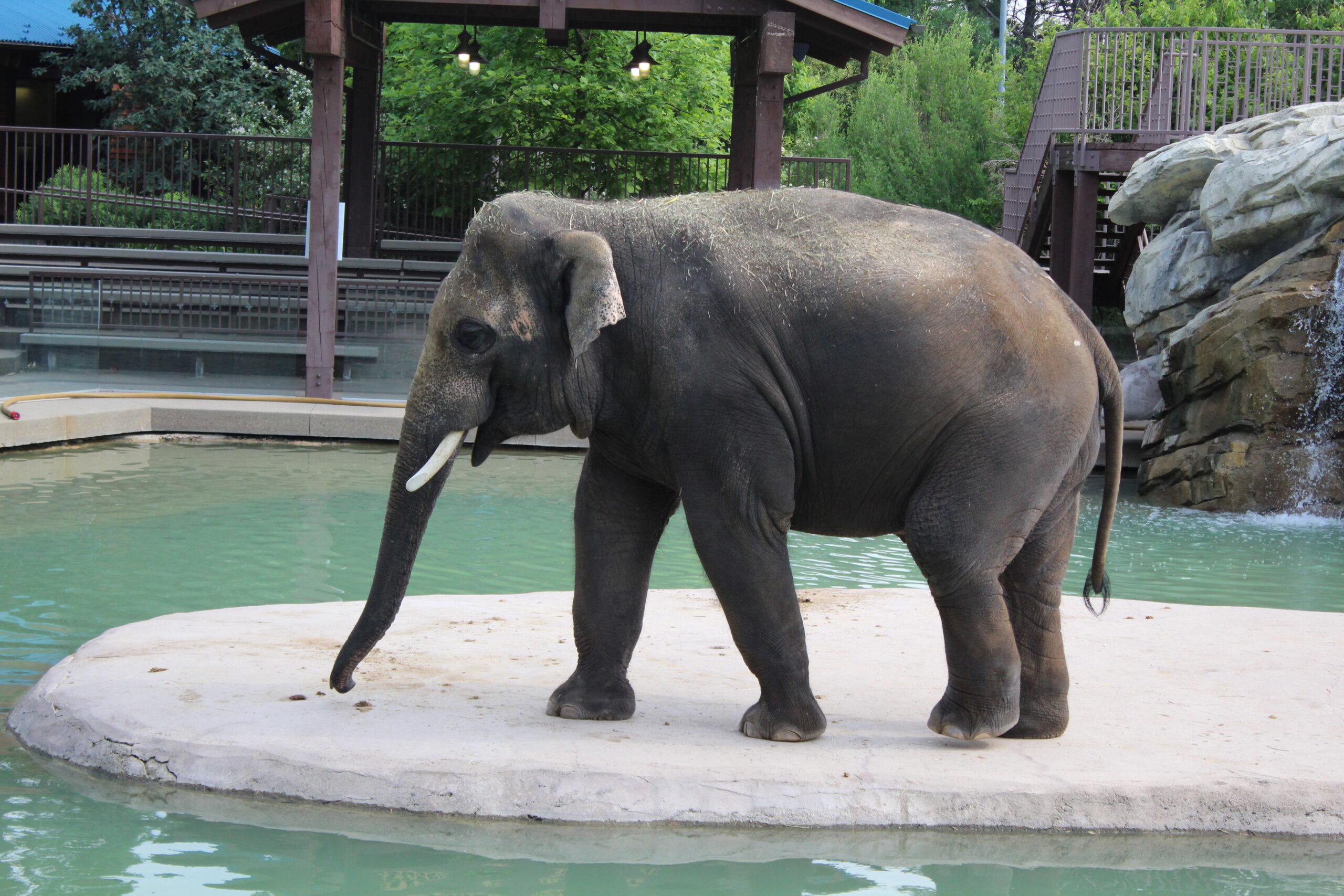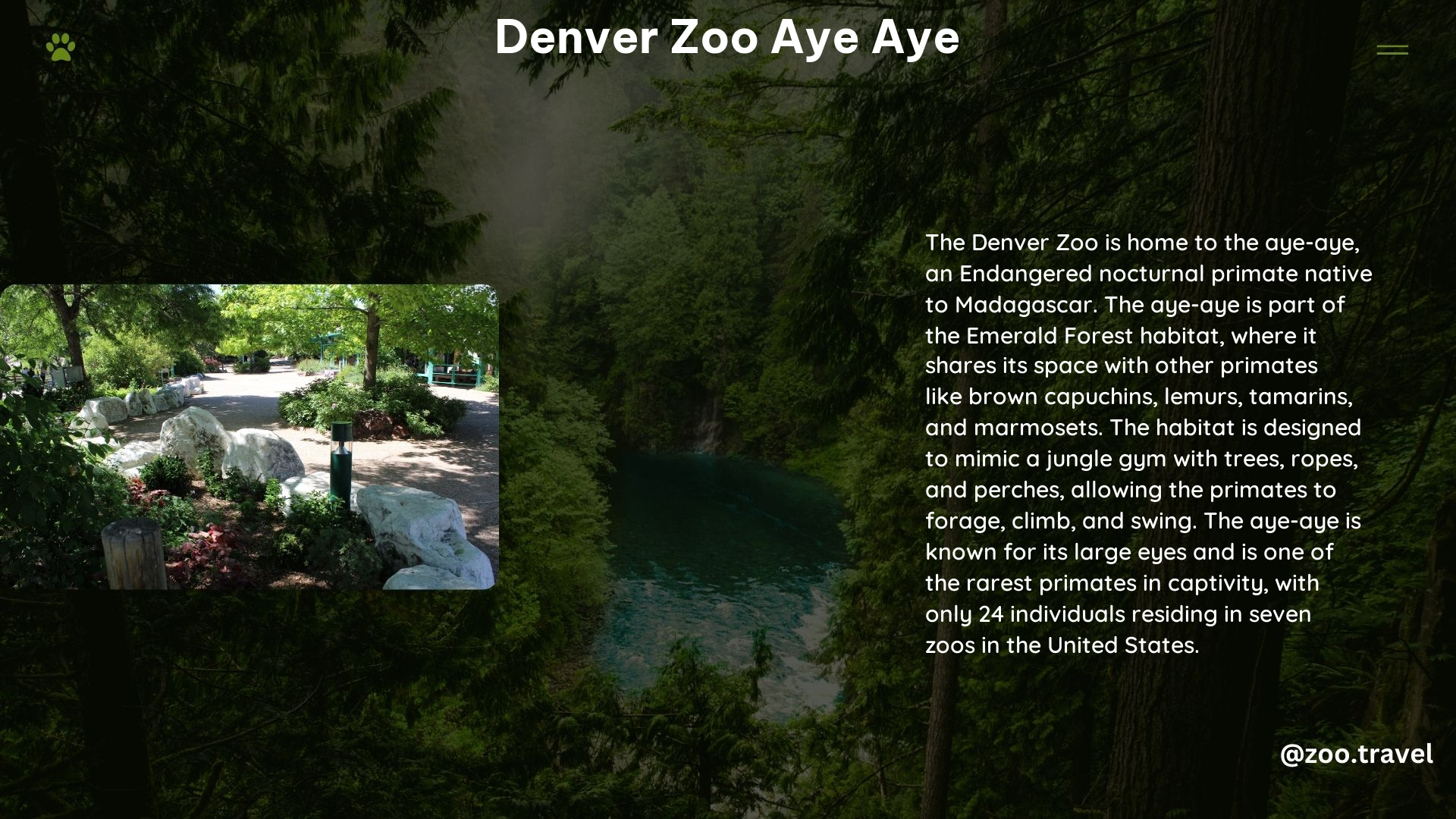The Denver Zoo is home to a rare and fascinating creature, the aye-aye. As one of only 24 aye-ayes in captivity across the United States, this nocturnal primate is a true gem for visitors to the zoo. From its unique physical characteristics to its elusive behavior, the aye-aye at the Denver Zoo is a must-see for any zoo enthusiast.
Introducing Tonks: The Denver Zoo’s Baby Aye-Aye

The Denver Zoo is proud to be home to a baby aye-aye named Tonks, born in 2021. Tonks is a significant addition to the aye-aye population, as these primates are notoriously difficult to breed in captivity. With only 24 aye-ayes in seven zoos across the country, Tonks represents a valuable contribution to the conservation efforts for this endangered species.
Aye-Ayes: A Rare Sight in US Zoos

Aye-ayes are not a common sight in American zoos. In fact, there are only 24 aye-ayes in captivity across seven zoos in the United States. This makes the Denver Zoo’s aye-aye exhibit a unique and special opportunity for visitors to catch a glimpse of this elusive primate.
Unique Features of the Aye-Aye
The aye-aye is a truly remarkable creature, with several distinctive features that set it apart from other primates:
Echolocation
Aye-ayes are the only primates known to use echolocation to locate their prey. They tap on wood with their long, skeletal middle fingers to detect the presence of larvae and other insects inside the wood.
Physical Characteristics
Aye-ayes have a unique physical appearance, with coarse dark hair, long bushy tails, rodent-like teeth, piercing eyes, and skeletal hands with extra-long middle fingers featuring hooked claws.
Nocturnal Behavior
Aye-ayes are nocturnal, making them difficult to spot during the day. They are most active at night, searching for food and engaging in other behaviors.
Tips for Spotting the Aye-Aye at the Denver Zoo
Seeing the aye-aye at the Denver Zoo can be a challenge, but with a few tips, you can increase your chances of catching a glimpse of this elusive primate:
- Visit Early and Late: The best times to spot the aye-ayes are soon after the zoo opens (around 10:30 a.m.) and late in the afternoon (around 3:30 p.m.).
- Let Your Eyes Adjust: Spend at least five minutes in the exhibit to let your eyes adjust to the darkness. Keep cell phone lights off and don’t shine them into the habitat.
- Look Up: Tonks tends to spend more time on branches in the higher areas of the habitat.
The Aye-Aye’s Habitat at the Denver Zoo
The aye-aye at the Denver Zoo resides in the Emerald Forest habitat, which is designed to simulate a night-like environment. This habitat is open to visitors during the zoo’s regular hours, from 8:30 a.m. to 5:00 p.m.
Conclusion
The aye-aye at the Denver Zoo is a truly unique and fascinating creature. With its rare status in captivity and its distinctive features, the aye-aye is a must-see for any zoo enthusiast. By following the tips outlined in this article, you can increase your chances of spotting this elusive primate and learning more about its remarkable characteristics.
